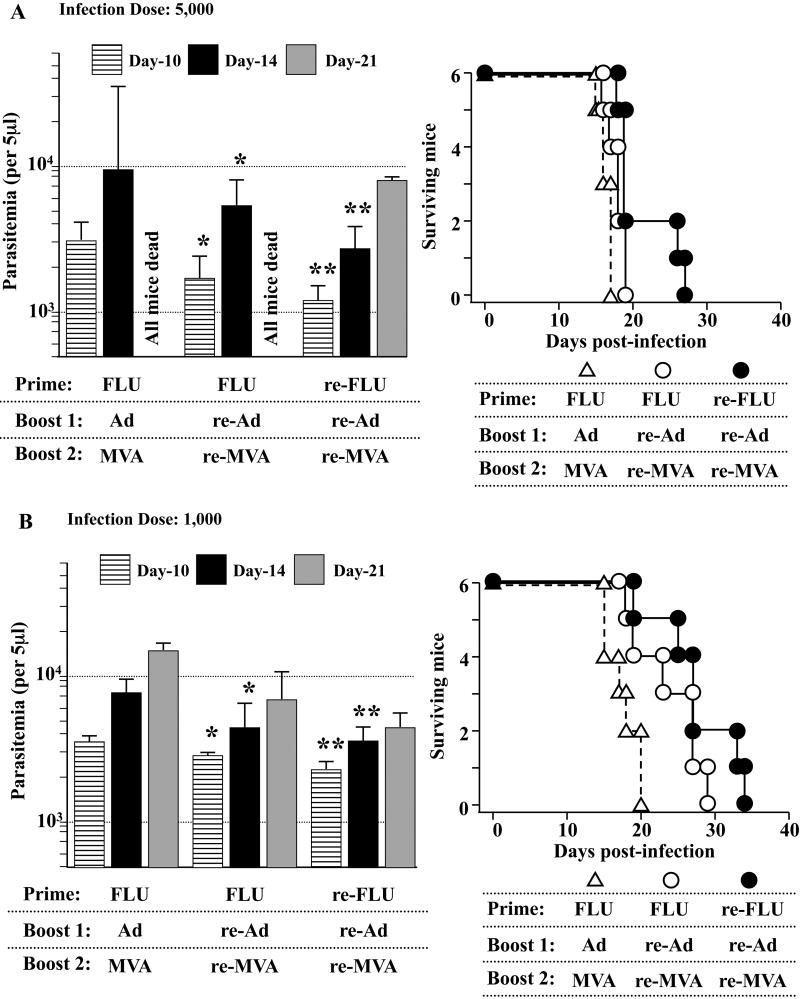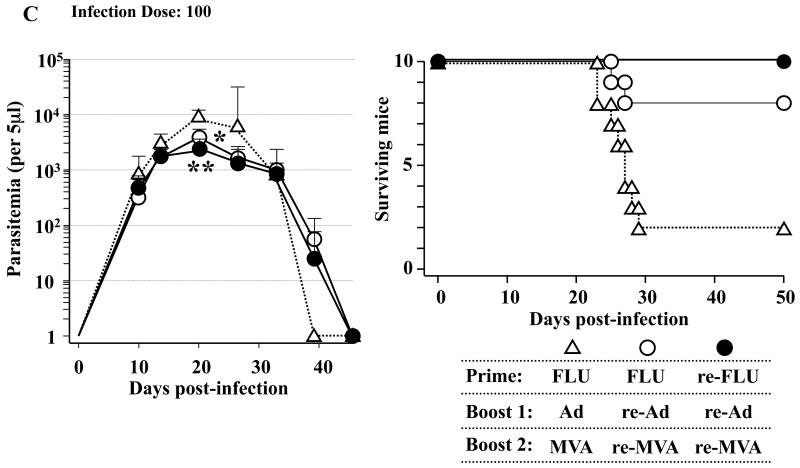Fig. 6.
The immunological efficacy of a triple virus vector vaccination regimen using three different recombinant viruses. B6 mice were primed with 4 × 104 plaque forming units (PFU) of either recombinant influenza (re-FLU) or control FLU. Fourteen days later, the mice were immunized with 5 × 108 PFU of either recombinant adenovirus (re-Ad) or control Ad. Then, 14 days after the first booster immunization, mice were given a second booster immunzation with either 5 × 108 PFU of recombinant vaccinia virus (re-MVA) or 5 × 108 PFU of control MVA. Each experimental group includes six to 10 mice. They were infected with 5,000 (A), 1,000 (B) or 100 (C) of Tulahuen strain of Trypanosoma cruzi blood-form trypomastigotes 14 days (A) or 21 days (B, C) after the last immunization. The number of parasites in 5 μl of peripheral blood (parasitemia) was counted at 10, 14, 21, 28, 35, 42 and 49 days p.i. *, P < 0.05 and **, P < 0.01 determined by the Student's t-test compared with the parasitemia of FLU/Ad/MVA-immunized mice. Survival was monitored daily. (A) The survival of re-FLU/re-Ad/re-MVA-immunized mice (●) was significantly different compared with either the survival of FLU/re-Ad/re-MVA-immunized mice (○) (P < 0.05) or the survival of FLU/Ad/MVA-immunized mice (△) (P < 0.01). The survival of FLU/re-Ad/re-MVA-immunized mice (○) was significantly different compared with the survival of FLU/Ad/MVA-immunized mice (△) (P < 0.05). (B) The survival of re-FLU/re-Ad/re-MVA-immunized mice (●) was significantly different compared with the survival of FLU/Ad/MVA-immunized mice (△) (P < 0.01). The survival of FLU/re-Ad/re-MVA-immunized mice (○) was significantly different compared with the survival of FLU/Ad/MVA-immunized mice (△) (P < 0.05). (C) All of the re-FLU/re-Ad/re-MVA-immunized mice (●) survived the T. cruzi infection. The survival of FLU/re-Ad/re-MVA-immunized mice (○) was significantly different compared with the survival of FLU/Ad/MVA-immunized mice (△) (P < 0.01).


